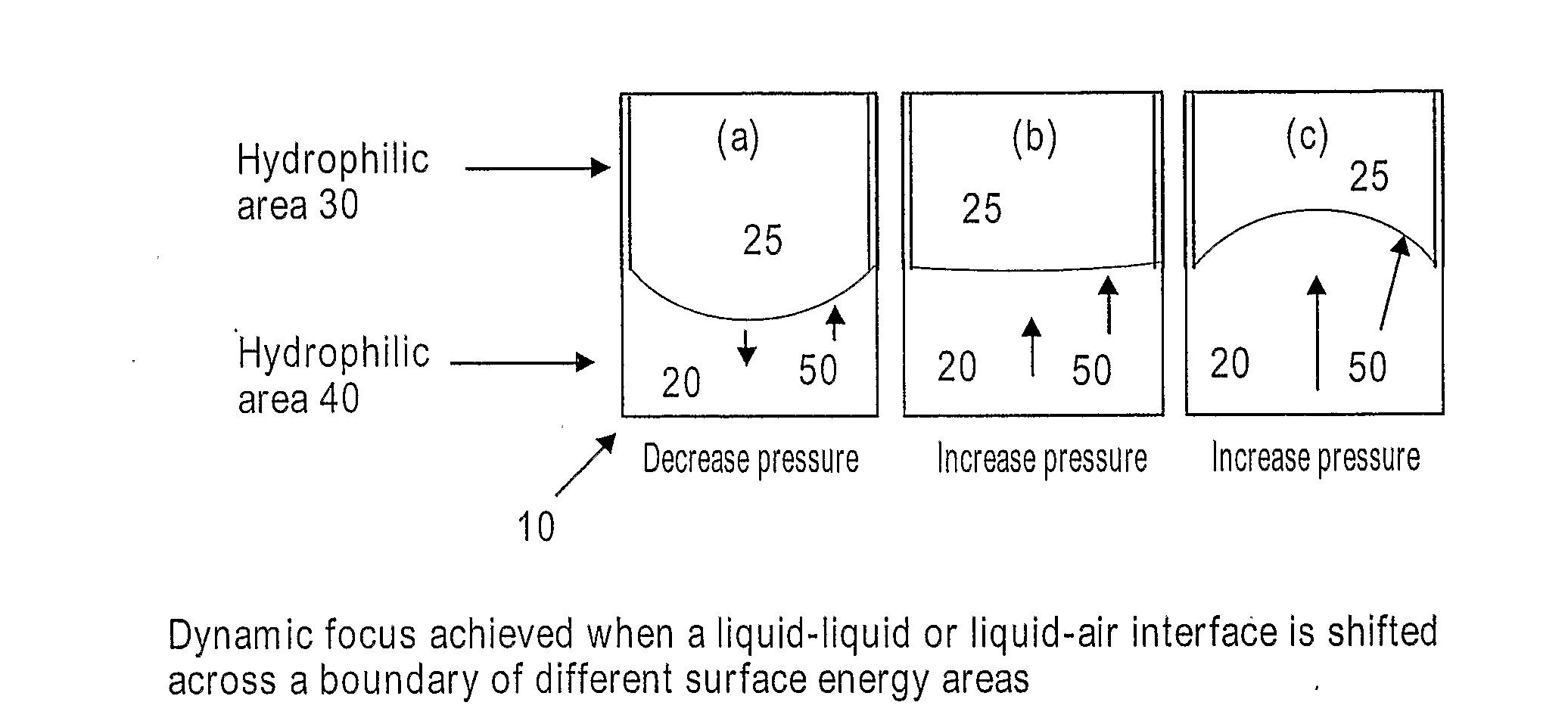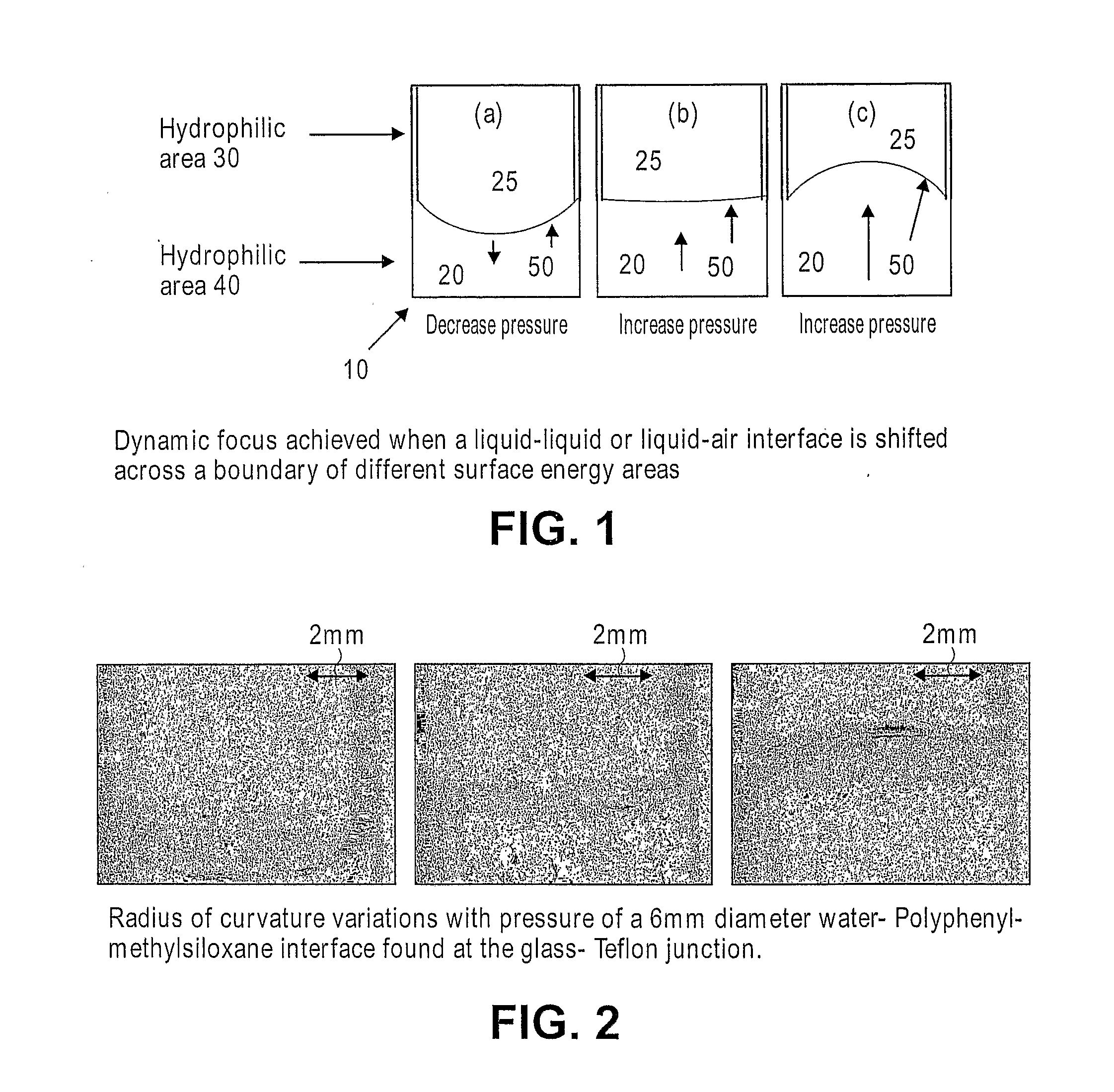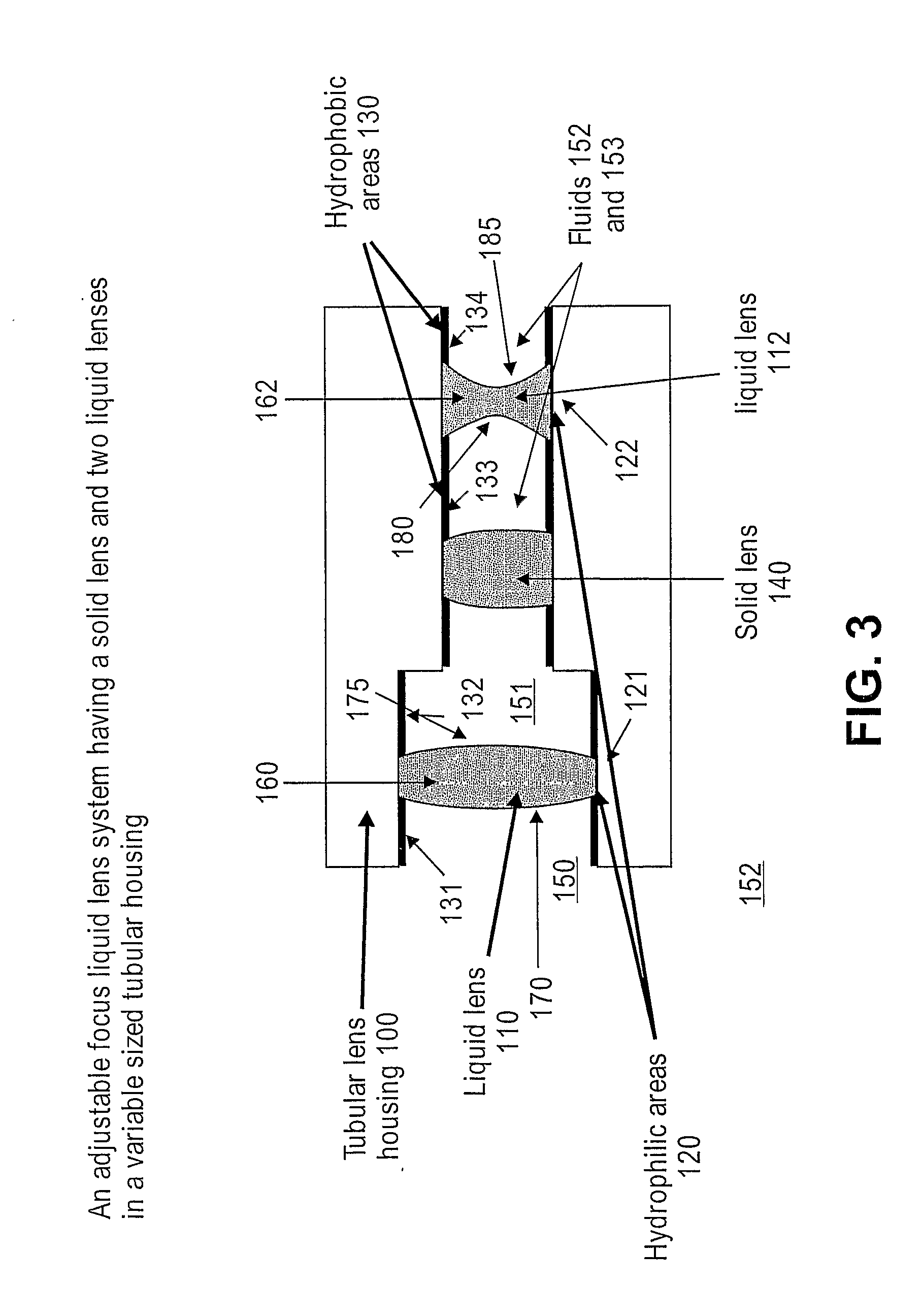Method for Forming Variable Focus Liquid Lenses in a Tubular Housing
a liquid lens and variable focus technology, applied in the field of optical systems, can solve the problems of small optical path modulation, slow and expensive device that relies on manual positioning, and small electro-optic coefficient of tunable gradient index lenses,
- Summary
- Abstract
- Description
- Claims
- Application Information
AI Technical Summary
Benefits of technology
Problems solved by technology
Method used
Image
Examples
Embodiment Construction
[0024]The present invention provides a variable focus fluid lens wherein the focal length is controllable by changing the contact angle of a fluid meniscus.
[0025]FIG. 1 illustrates an optical device having an adjustable focus fluid lens according to one embodiment of the present invention. As shown, a tubular housing 10 includes a hydrophobic region 30 adjacent a hydrophilic region 40. A first fluid 20, such as water, is contained within tubular housing 10. As shown, the fluid 20 is constrained at the boundary between the hydrophobic region 30 and the hydrophilic region 40 due to the hydrophobic properties of region 30. A second fluid 25 further constrains the fluid 20, and a fluid-fluid interface, or meniscus, 50 is formed. Second fluid 25 may include a gas or a second liquid that is immiscible with the first fluid 20. The contact angle of the fluid-fluid interface 50 defines the curvature of the meniscus 50, which in turn defines the focal length of the fluid lens.
[0026]The schema...
PUM
 Login to View More
Login to View More Abstract
Description
Claims
Application Information
 Login to View More
Login to View More - R&D
- Intellectual Property
- Life Sciences
- Materials
- Tech Scout
- Unparalleled Data Quality
- Higher Quality Content
- 60% Fewer Hallucinations
Browse by: Latest US Patents, China's latest patents, Technical Efficacy Thesaurus, Application Domain, Technology Topic, Popular Technical Reports.
© 2025 PatSnap. All rights reserved.Legal|Privacy policy|Modern Slavery Act Transparency Statement|Sitemap|About US| Contact US: help@patsnap.com



